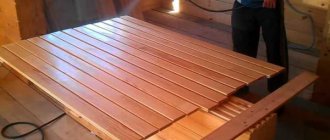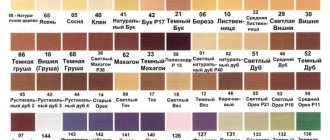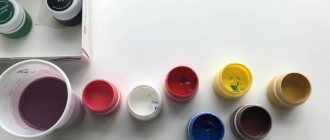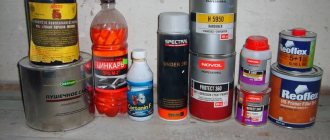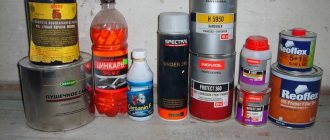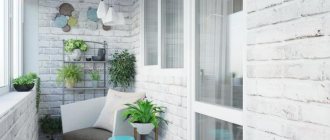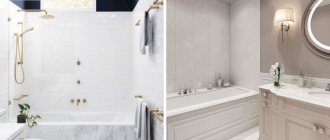Every sane man, living in an apartment and having a balcony, dreams of making it more comfortable. For these purposes, the most suitable option is to trim it with clapboard. After all, it is an environmentally friendly product that can breathe. Lining is a beautiful and durable material that is resistant to mechanical damage. However, it is made of wood, and wood without proper care and treatment very quickly becomes unusable. Therefore, it is very important to know how to cover the lining on the balcony and all the subtleties of its processing.
Selection of protective composition
Various processing materials that are applied to wood not only protect it, but also improve its appearance. After all, when using various paints and varnishes, you can make works of art from lining with your own twist.
Before treating the lining on the balcony, experts pay close attention to the appearance of the object. Depending on whether it is glazed or unglazed, the choice of composition is made. If the balcony is glazed and protected from external factors such as rain, snow and sunlight, then you can use solutions for interior wood finishing. Well, if it is open, then it is treated with solutions for external treatment. It is also important to treat the wood with a fire-retardant material and a rot-preventing agent.
Step by step instructions
Recommendations for finishing begin with the condition that all necessary work on insulation, waterproofing and vapor barrier of the event has been completed, all heating devices planned by the design have been installed and electrical wiring has been carried out.
Next, select the type of installation from two main ones:
- the horizontal direction will visually make the room wider, but lower;
- the vertical direction will “raise” the ceiling.
They differ in the method and order of facing work.
Determining the direction is important for arranging the sheathing on which the wooden slats will be attached. The supporting structure must be built perpendicular to the direction of laying the sheathed material
The basic rules for installing lathing are as follows:
- made from wooden beams measuring 20x30mm and 40x50 mm or the size must correspond to the thickness of the insulation;
- the beams are attached perpendicular to the direction of the main cladding;
- used for fastening dowels;
- the entire structure must be adjusted to size and checked for evenness in all directions.
If the loggia is well sealed, the sheathing is attached directly to the brick wall. Insulation is laid between the joists and plastered. And then it is recommended to treat it with polyvinyl acetate putty, which has very strong protective properties.
The stages of horizontal cladding are as follows:
- measuring and cutting boards;
- the first board is fastened with a ridge from the corner and secured with small nails;
- all the others are connected in the same way, except for the last two;
- the last board is made 1-2 mm smaller;
- at the penultimate rail, the shunt ridge is partially cut off and rounded off;
- the last two boards are placed at an angle to each other and, after slight pressure, snap into place.
The stages of vertical cladding are as follows:
- measuring and cutting boards;
- the first board is attached from the ceiling to the floor, with the tongue up and the groove down;
- can be secured with small nails or using clamps;
- constantly checking the horizontality of the boards;
- the last board is placed near the floor, its width is adjusted to the required width using a saw, taking into account a distance of 10 mm from the floor.
When processing corners, special corners and slats are used. They are screwed in as finishing at the last stage along with the baseboard. The plinth is mounted at all joints: between walls, between floor and wall, between wall and ceiling.
The most important stage is the choice of what to cover and process the lining on the loggia to protect and varnish the wood. Many experts advise using a polyvinyl acetate coating, which will create a thin film on the surface and prevent spores of harmful fungi from starting to multiply on the tree. But at the same time it will allow the wood boards to breathe and not rot from the inside.
Apply this mixture in 2-3 layers, allowing each to dry completely before applying the next. After treatment with this composition, there is one limitation regarding the care of the panels - they cannot be washed with chemically active and abrasive compounds.
To create additional protection, varnish coatings are also suitable, which also carry an aesthetic load. You can use special varnishes without fungicides and any parquet varnish.
On the modern market there are offers for final processing - stains. They contain alkyds, acrylic and other substances as a base. There are offers with a base of linseed oil.
Additionally, you can treat the wood with fire retardants. These include:
- flame retardants, which block the access of oxygen to wood when heated, creating a protective film;
- protective coatings “Phoenix DP”, “Endotherm 250103”;
- impregnating compositions "Tekkurila", DSA-1, "Barrier".
But all these compounds spoil the appearance and texture of the wood, so it is better to treat the joints and the inside of the slats.
https://youtube.com/watch?v=-qXMF7ZpSSs
Wood processing materials
Paint is a very good means of protection. After all, it lies in a dense layer on the wood. Although paint may hide the structure of the wood, it is good for hiding minor defects. Experts carefully examine the source material before painting the lining on the balcony . The following types of paint are used for painting:
- Oil based paint. Made from vegetable oils. It is well absorbed into the wood and does not interfere with breathing. It also protects against the effects of all kinds of negative factors. Not subject to cracking. The main disadvantage of such paints is the very long drying period. It is also worth noting that dark shades can fade quickly, so it is not recommended to apply paint on the sunny side of the house. It is best to apply it to white lining on the balcony.
- Alkyd paints. As a rule, they are made on the basis of natural or synthetic drying oil. When applied and dried, it forms a good protective coating against moisture. It is also both dense and elastic. It does not crack and is practically not damaged by mechanical stress. It has a good level of protection against the effects of aggressive chemical compounds. Among the negative abilities, it is a very pungent smell. If working indoors, you should always use a respirator. This paint is also very demanding when it comes to its intended use.
- Facade paints. These paints are intended exclusively for exterior use. They have excellent durability and elasticity. The main disadvantage of such paints is the small selection of colors and shades.
Unlike paint, varnishes preserve the structure and appearance of wood. For these types of work, the following types are mainly used:
- Water-based varnishes, or scuba varnishes. As the name suggests, they are based on water. A very safe form of protective application. Dries very quickly and has no odor. It has various types of shades from colorless to exotic upon request, which gives rise to a lot of ideas for decoration. A huge disadvantage is the inability to protect products, unlike paints. It is for this reason that they are used exclusively for interior decoration.
- Varnish based on alkyd resins. Has excellent water-repellent properties. Resists frost well. It has good elasticity, strength and durability. Perfectly protects materials from mechanical damage. The downsides are a strong and unpleasant odor and a long drying time.
- Polyurethane varnishes. One of the best protection products for outdoor use. Since it is an excellent protector from moisture, frost and has very impressive durability. Varnishes are available both clear and tinted, which can give the wood shades of noble wood species. They have their own specific smell, which disappears after drying. It is for this reason that they are used for outdoor work. When deciding how to cover the lining on a balcony on the sunny side, this varnish will be the best answer.
- Acrylic. The base is acrylic. The safest type of varnish with excellent protection from ultraviolet rays and resistant to fading. For dilution, use an alcohol solution or plain water. Materials must be processed in two layers. The first is protective, the second sets the color basis.
Thus, to paint eurolining on a balcony and loggia, you need to use the paints and varnishes listed above. It all depends on the conditions and type of work. In addition, it should be remembered that the wrong choice of material can cause a wooden board or beam to darken.
putty
Building materials stores offer the buyer various options for wood putty. The advantage of this product is the price of the least amount of consumables. Very little of this substance is required to plug the gaps and cracks of the lining. The application layer is no more than two millimeters, dries quickly. For wooden surfaces, a glue or oil base is suitable.
Basic
The composition includes large particles. Apply up to three layers.
Finish
More liquid and viscous. Apply over base putty. Before painting, make sure that the layer is applied evenly.
The putty is applied evenly with a spatula into the gaps and joints of the lining. After this, it is treated with primer or an antiseptic. Next, we proceed to update the appearance of the beams.
Types of impregnating compositions
Various impregnations are also used for wood processing. Thanks to their deep penetration into the structure of the tree, they better protect it from the effects of external negative factors. There are various types of impregnations, such as fire retardant, protection against insects and rot. The most suitable for manual processing are:
- Stain. Consists mainly of water, alcohol, alkyd oils. It is available in various states - from white powders to ready-made solutions. It has excellent antiseptic properties and prevents moisture from penetrating into the wood structure. Has a large selection of shades to suit every taste. There are solutions for external and internal use.
- Wax-containing impregnations. Protect wood from moisture and extreme temperature changes. After application, the structure can be glossy or matte, it is very beautiful. It is also well suited for outdoor use as it has good UV protection. It should be borne in mind that it is rarely white.
These substances allow you to saturate even painted wood. Their remains can be used for the floor inside the balcony. However, not everything can be applied to a loggia without heating; it is better to consult the store on this issue.
Surface preparation
Before applying the product, it is recommended to prepare the surface, especially if the lining is old. To do this, the old coating is cleaned of dirt.
Preparation stages:
- Inspection of surfaces, search and filling of cracks, mother-in-laws. Any defects on the surface of wood are considered an increased source of danger, since they are a favorable environment for the proliferation of harmful microorganisms. If the crack is located on the outside of the loggia, there is a high risk of wind blowing. Wood putty allows you to disguise the most minor irregularities. Excess composition must be removed with a spatula.
- Sanding the dried surface - first the putty areas are treated, after which the rest of the surface is leveled. Applying effort will help you get a perfectly even lining.
- Cleaning the surface from dust - when carrying out work, it is recommended to use a vacuum cleaner turned on at maximum power. Alternatively, a brush or broom can be used. The goal is to remove dirt from the most difficult to reach areas.
Features of lining processing
The choice of material used becomes more complicated if the balcony is to be treated on the sunny side. Exposure to ultraviolet rays has a very detrimental effect on the materials used. There is also a factor such as high temperatures during the day and low temperatures at night. Therefore, the characteristics of the processing substances should be taken into account. Particular attention should be paid to the presence of protective properties against ultraviolet radiation.
In any case, it is not recommended to apply oil-based compounds to such surfaces, as they will quickly fade and crack. The best option in such cases would be to use wax-based impregnations and acrylic varnishes. But if you need to choose a color, then it is better to use facade paints .
Description of the painting process
To make it easier for you to understand the process, we have divided it into 2 parts:
- Preparatory activities;
- Applying paint.
Both steps are simple, but require some knowledge. Therefore, carefully read all the information below in order to thoroughly understand the topic and carry out the work efficiently.
Colors can be combined if desired
Pretty Provence style in the design of a balcony
Light, airy shades and an abundance of delicate, romantic trinkets - the charm of Provence in balcony design. Laconicism and simplicity of design is evident here in every detail.
In order to maintain the style, it is necessary to paint the lining in light pastel colors; soft pink, peach, cream, bluish colors with interesting details in contrast in dark blue, deep purple and other shades are suitable.
A lot of fresh flowers, collected bouquets or growing in exquisite flowerpots, it doesn’t matter, the main thing is that there are more of them.
In general, the interior contains only the most necessary items for a comfortable stay and does not exclude cute, simple decorative elements.
Preparatory work
It is necessary to apply a protective agent before covering the balcony with clapboard.
The first step is to inspect the surface. If you do not immediately treat it with special means, then fungus or mold may form on it.
It is necessary to clean off dust and dirt, as well as from the previous coating if it has become unusable.
Allow the wood to dry thoroughly before installing. The minimum drying period is 14 days.
To clean dirt, you can use pumice, sandpaper or a rough brush. Pay attention to chips and cracks on the surface. Carefully sand the places of their formation and those areas where they may appear.
Tool
To carry out paint and varnish work, you will need the following tools, which are best prepared in advance.
Although many sites claim that paint can be applied to the lining using a paint roller or sprayer, the most convenient tool, and most importantly one that will ensure high-quality coating, is a brush.
It is best to purchase separate sets of brushes for each type of protective composition. This will free you from the need to wash the brush after impregnation for the primer, and from the primer for varnish or paint, and thereby not only improve the quality of the work, but also reduce the time it takes to complete it.
If all the rules for the protective treatment of the lining are observed, it can retain its original appearance without repair or restoration work.
Source: remont-na-balkone.ru/remont-i-otdelka/chem-pokryit-vagonku-na-balkone.html
